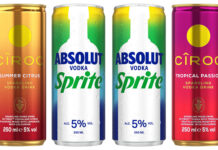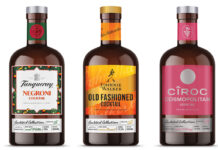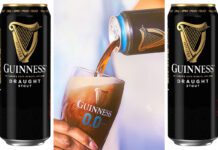Price-marked packs have grown to dominate many convenience stores’ product displays and they now play a major role in almost every product category. With predictions of tight consumer spending ahead and the forcible removal of PMPs from tobacco products we could see PMPs become even more important in all those other categories where they are permitted. We asked suppliers and brand teams across food and drink about their latest thoughts and latest activity on PMPs.
PMPs have been around for many years but they gained huge prominence in the period that followed the financial crash of 2008. But not all categories embraced the technique at the same speed. In drinks it took some time before wines and spirits began to make wide use of PMPs.
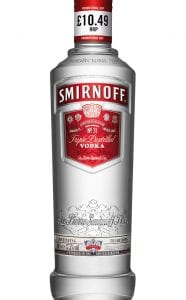
But that has changed considerably in recent years and the large drinks firms have been catching up fast. Now many of the biggest names and brands in wines and spirits produce a variety of standard-sized and fractionally sized PMPs specifically for convenience stores.
Diageo is a case in point. The global spirits giant with brands such as Smirnoff, Bell’s, and Captain Morgan, is now also a major provider of PMPs and it’s quick to point out what it sees as the advantages of price-marked packs.
Some 20% of spirits shoppers make impulse purchases in convenience stores its own figures say.
And, remarkably, PMPs sell, on average, three times the volume of standard bottles per point of distribution.
Over half (53%) of consumers are more likely to try a new product if it’s sold as a PMP, the company has found.
So why are PMPs doing so well and how does it think convenience retailers can use that to their best advantage?
“PMPs are a growing trend and consumers are increasingly looking out for them in convenience stores. Having a range of PMPs available in your store instils a sense of confidence and trust between you and your shopper and creates a perception of value,” argued Diageo GB head of category development James Cragg.
53% of consumers more likely to try a new product if it’s in a PMP
“PMP spirits have more than tripled in value in the past year, and Diageo’s 70cl PMP SKUs have performed on average 31% ahead of the standard SKUs.
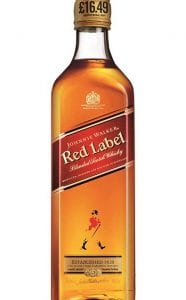
“Gordon’s and Captain Morgan Spiced PMPs both saw great success when they launched in 2014, and now consumer-favourite Johnnie Walker Red Label has joined the Diageo PMP range in 70cl and 35cl.”
And the firm reckons many retailers see real benefits in stocking PMPs. Quoting HIM the firm notes that retailers say: PMPs are key to driving sales; they sell faster than standard packs; they save retailers the time normally taken in pricing products; they improve retailers’ price image; and they signal that they want to compete on price.
The drinks firm’s top tips on PMPs and general spirits merchandising in convenience outlets include:
• Maximise spirits purchase in your store by stocking the right range, in an ‘easy to shop’ layout, and by offering price-marked packs to reassure shoppers they are getting fair value.
• Consider the mission your shoppers are on, which is frequently to pick up ‘something for tonight’.
• Include a variety of fractional sizes of spirits (50cl, 35cl, 20cl) in your range.
• Stock PMP premixed drinks in the chiller.
• Site all category brands together, for example all vodka brands together. Faster-selling categories and products should be at eye level.
• Place best-sellers in the centre of the category as they act as anchor brands to help shoppers identify a category.
• Price items clearly (PMPs have clear pricing already on pack of course. But, in general, recognise that visible pricing is a key factor influencing a typical shopper’s decision to purchase).




